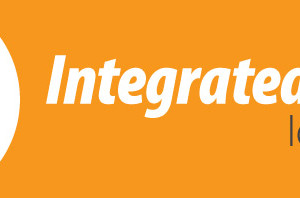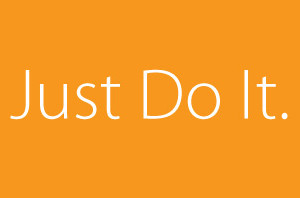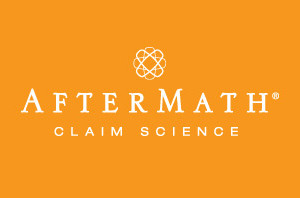
Call it the brand nerd in me, or call it the opportunist in me, but naturally, when I see an awesome idea, I’m inclined to talk about it. It’s why I wrote about some of my favorite nontraditional brand placements (wet wipes, coffee sleeves, cash jackets, and more) in a 2014 blog, and it’s why today I would like to talk about another concept that not only reinforces your brand in an unexpected place, it positions you as a leader in the environmental movement at an affordable price.
This “new frontier” isn’t even a new idea—more of a new take on a throwback. The idea I’m talking about is the paper straw, something that has been around for nearly a century and a half, and is coming back into favor, due in part to environmental concerns and things like the heart-wrenching video of a plastic straw being removed from a sea turtle’s nostril.
How the Paper Straw is Making a Comeback
As someone who grew up knowing nothing besides the plastic straw, I was surprised to learn that paper straws a) existed, and b) didn’t break down in a beverage. A bit of research later, and I was quite happy to learn that yes in fact, paper straws have been around since 1888, and that they can handle the needs of the average beverage drinker.
The Initial Rise and Fall of the Paper Straw
Do you know where the term straw comes from? If you said, “Of course! People used rye straws throughout the 1800s to drink their beverages,” you’d be right, and I’d like to invite you to my trivia team right now (we play at Nevin’s on Sundays).
That’s right, the first modern iteration of the drinking straw (Sumerians used straws for beer long before then), was literally straw. However, the “natural” straws didn’t hold up to the needs of the beverage connoisseur. This all changed in the mid-1880s, when a Washington DC resident by the name of Martin Stone had gotten sick of the grassy taste and gritty residue left by the rye straw in his mint julep, and decided to tackle the problem.
Stone wrapped strips of paper around a pencil, removed said pencil, and glued the strips together, resulting in a much sturdier drinking utensil. He then made improvements to this “modern straw,” using manila paper and paraffin to improve durability, then patenting his design in 1888.
These straws spent the next eighty-or-so years as the de facto option for enjoying beverages, before plastic straws came into play in the 1960s—offering an even more durable drinking experience and slowly killing the paper straw business by promising affordable mass-produced products that could handle the needs of the growing fast-food industry.
The Problem with Plastic
Unfortunately, plastic straws turned out to be too durable, resulting in the current problem that exists today. According to the National Park Service, Americans use 500 million straws per day. Plastic straws aren’t biodegradable, meaning that the first straw you ever used is still floating around somewhere. This has led to an increasing presence of anti-straw movements like No Straw Please, The Last Plastic Straw, Strawless Ocean, Straw Wars, Be Straw Free, Lonely Whale, and likely dozens more, all of whom are more qualified than I am to talk about the environmental impact of plastic straws.
The Paper Straw’s Comeback Story
In recent years, this anti-straw movement has intensified, and the paper straw is becoming popular again. This resurgence appears to be led by Aardvark® Straws, a subsidiary of Precision Products Group (PPG), who has done some interesting things with paper straws, and who has put a modern twist on the original paper straw—making it more durable while still maintaining the environmental sustainability of paper straws.
Aardvark has spent the last decade working to bring back the paper straw, and offers a wide variety of straw options to customers—providing everything from the basic white straw to straws with logos, metallic finishes, or custom prints.
Why This All Matters for Retail and Restaurant Brands
Today’s consumer is more aware (woke, as the kids say) than ever, and are more likely to purchase products and services from companies whose values are aligned with their own. According to Horizon Media’s Finger on the Pulse survey, more than eight in 10 Millennials (81%) expect companies to make a public commitment to good corporate citizenship.
In this, many of these millennials are environmentally conscious, and expect companies to align with their needs. This is where restaurants, retailers, and others in the hospitality industry can gain an edge with something as simple as a straw.
Positioning Yourself as a Green, Natural, Environmentally-Conscious Brand
When done correctly, “going green” can be a boon for business. While you can’t just drop a handful of paper straws in a cup and call yourself a green brand, you can explain that the move to implement paper straws over plastic is just one step in “reducing your carbon footprint,” or “going all-natural.” In fact, I am somewhat surprised that Panera, Chipotle, or any of the other “natural” fast casual restaurants hasn’t made the move to use paper straws.
This said, the straw is still a necessary implement for some (people with disabilities), and a useful tool for others (people with facial hair), and shouldn’t be completely removed from the equation. The paper straw offers the best of both worlds—allowing these people to still use a straw while reinforcing your commitment to the environment.
Learn more about brand perception and “brand love” by reading our blog on the best-perceived brands, and the brands loved most by young Americans.
Reinforcing Your Brand
As I had mentioned above, the “green brand” idea is just one benefit. The thing that drew me to Aardvark straws was their “custom straw shop.” As someone who appreciates the ability to reinforce your brand in seemingly innocuous places, the idea of slapping your company or event logo onto a straw was something that caught my eye.
Not only will your customer appreciate that you are taking important steps to improve your environmental impact, every time they look down to take a sip, they will remember that it was your company that provided them with this.
To me, this is the biggest benefit of making the switch to paper straws, as even if you aren’t motivated by being a “green brand,” there’s another kind of green that will motivate you: Money.
Conclusion
With customers more focused on their environmental footprint than ever, many are looking for brands that can resonate these values. This said, paper straws are allowing hospitality brands to still offer the drinking implements to customers without making a large environmental impact. For many people, straws are still useful if not vital, and this provides a new way to not only position yourself as a green brand, but also to reinforce your brand to a customer all the way down to the tiniest detail. At IDeas BIG, we’re the brand experts, and if you’re ready to improve your brand image, we’d love to talk.




